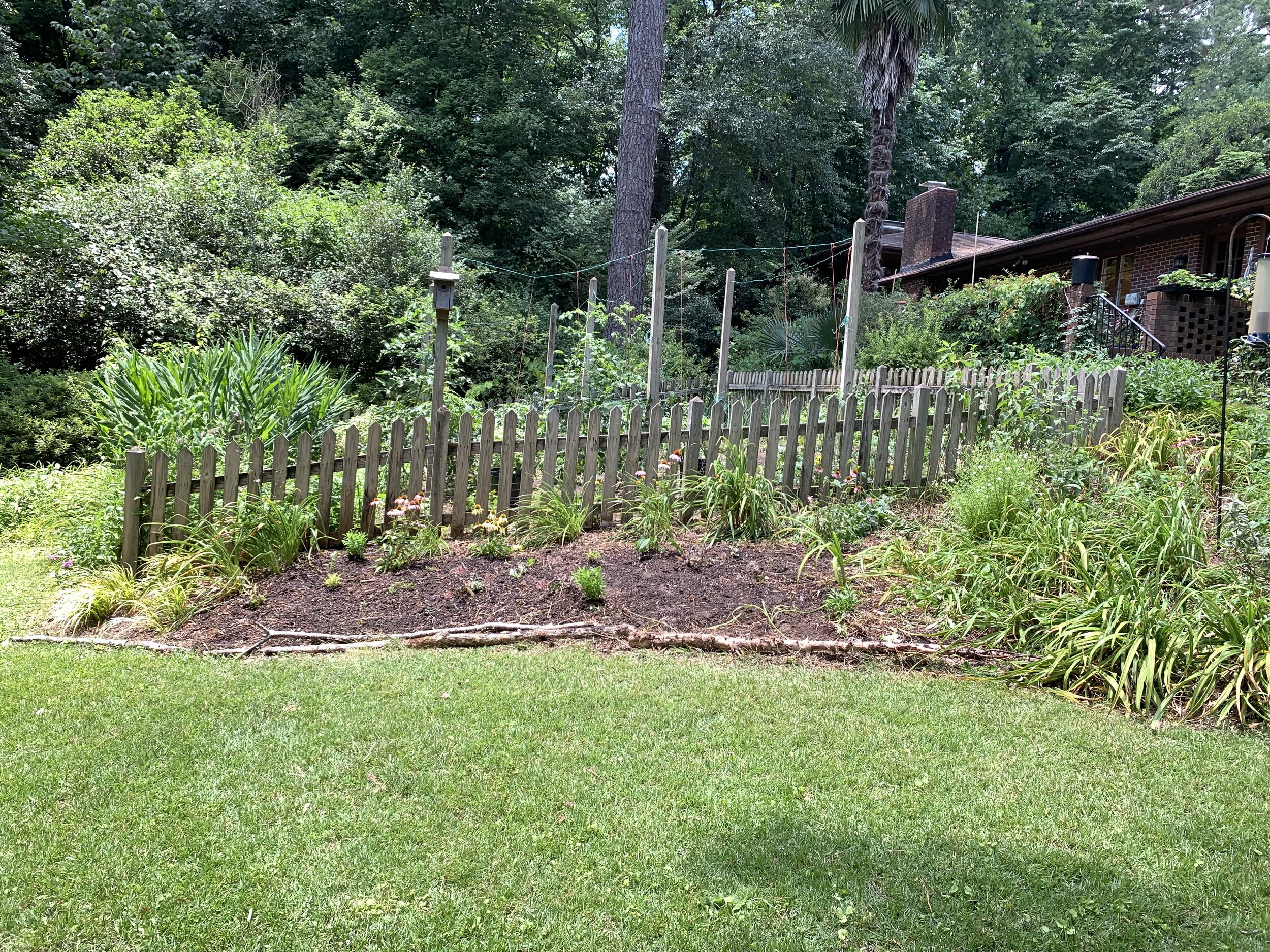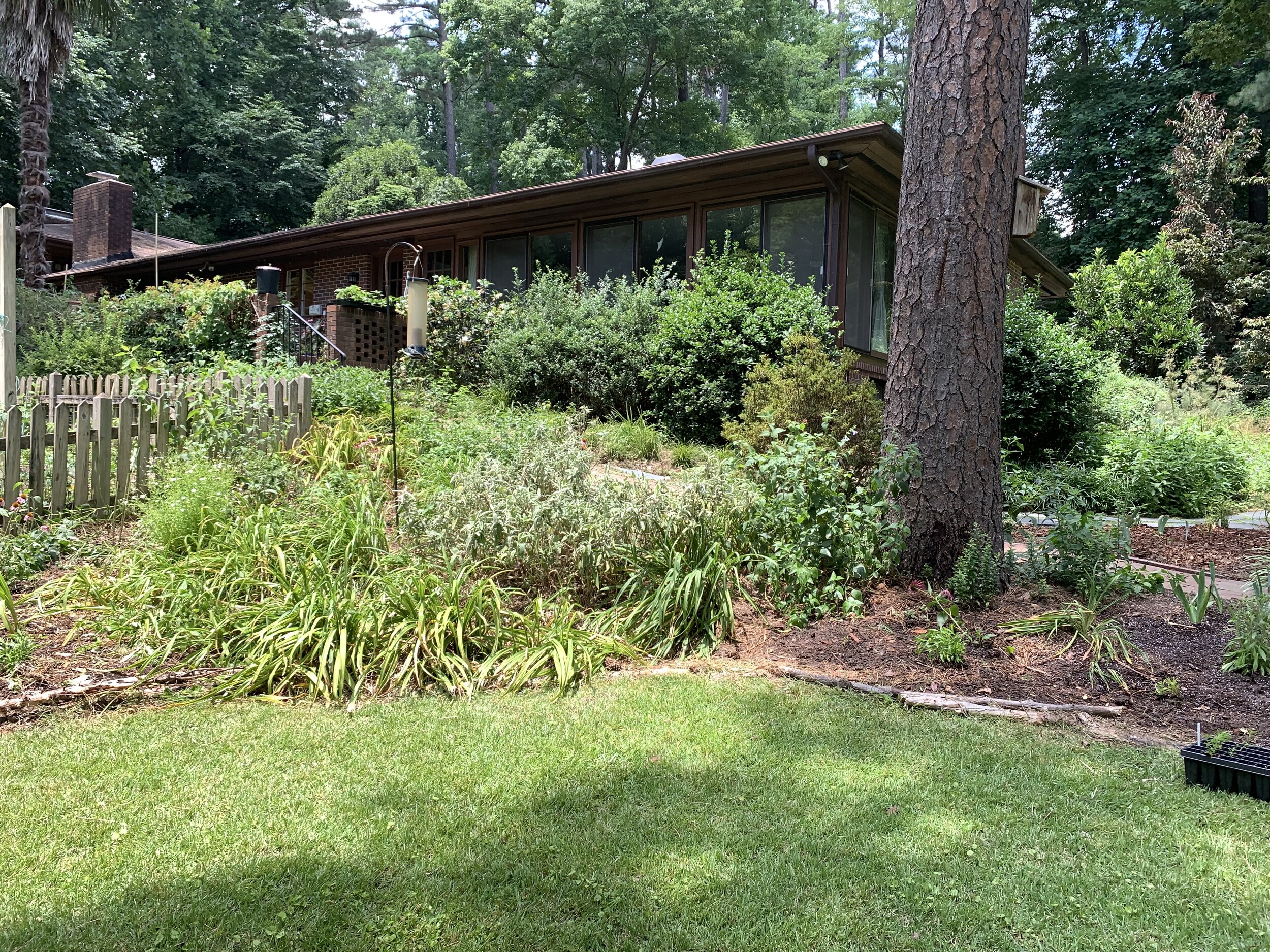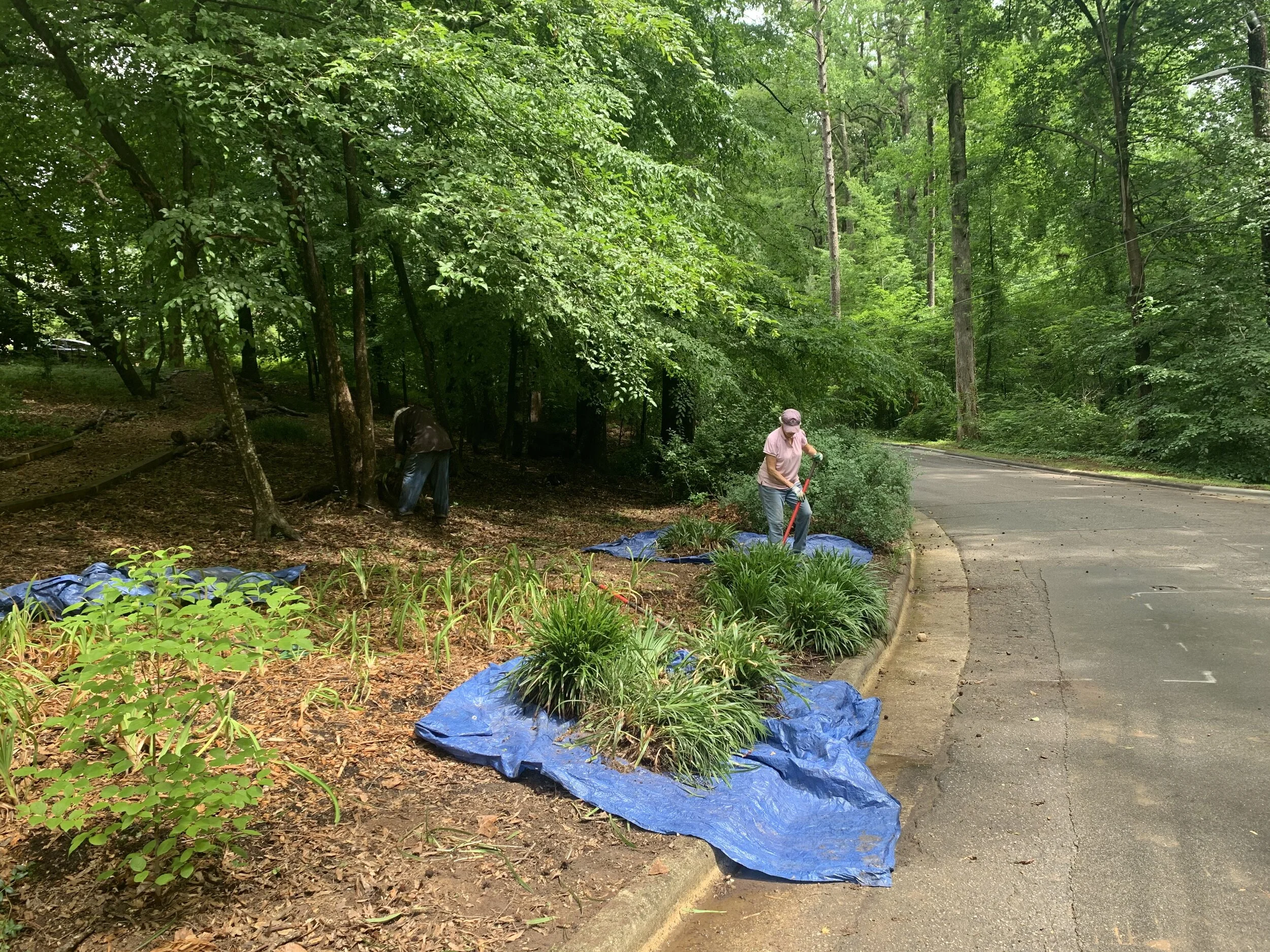MONDAY
Even though it was in the upper 80s today, the weather was just lovely. Weeded the path to the back porch. and mulched.
Found weeds didn’t sleep in the new Pollinator Garden. I removed these and checked the mulch. It was thin. I want at least three inches down, so I added more mulch.
Regunivated the gardenia.
Leaf & Limb stopped by today to treat the camellia tea scale.
I was finally ready to revisit the Formal Garden. I started in Quadrant One. Last week, I weeded half so I could stage mulch there until I could finish weeding and then spread. I still didn’t finish the weeding. Oh well…
TUESDAY
Rain, what rain? I had a plan B ready when the luscious rain came. As I left work, a drizzle started, and didn’t get much more than the rest of the day.
Finally, Q-one has been weeded. The lower lever weeds will need to scratch out, but I got the big stuff. I was surprised to even see lower weeds since there was no sun penetration due to the thickness of the weeds. How many weeds were there? I filled 11 yard wast cans, stuffed! To my credit, I did the worse quadrant first. I always do the hardest task of the day first to get it done and donw!
There was an area next to the compost bins that looked like a dirt/brick junk pile. Well, that is exactly what it was. It bugged me. All clean now.
Took down a dead dogwood branch. I would have left it for a snag, but the tree trunk was left to serve as the snag.
When I started, January 6th of this year, the climbing rose, Rosa 'Climbing Cecile Brunner', had been cut back since one of the two arbors needed replacement. I believe this was made by none other than the Gardeners of Wake County, Now it has grown, the canes are starting to reach the other side. While they weren’t long enough to hand over the other side, they were hanging enough to prickle me as I tried to walk under.
With those budding reaching canes, I brought some twine to train to the other side. Now I can walk underneath safely.
WEDNESDAY
Started working on the first half of the ten cubic yards of composted leaf mulch at the street. I should get the rest spread tomorrow.
Our fall bulb order went in for 300 Golden Earring, a blend of six varieties. All are yellow. Most have an orange accent. These are excellent for naturalizing, and terrific massed. I plan to place them along the street. As I continue to work to enhance the visitors’ experience, I want to make it pleasant for the neighbors as they walk with friends or their dogs.
Soon, I need to design the Formal Garden and order plugs from North Creek. I know of a few plants that we must have, and they will all be natives. This is the fun part!
My supervisor, Neal Wisenbaker, had a phone 1 to 1. It went well. We plan to do these bi-monthly.
THURSDAY
Do you know the circus acts that spin several plates in the air? That is how I felt today. Thank goodness, Aillene was able to volunteer, and I put her on the bed below the back porch. I felt guilty. There were so many gnarly weeds. To Aillene’s credit, she did manage to rid half of the dense, mass of weeds.
I thought I would be able to finish spreading the remaining five cubic yards of composted leaf mulch at the street, but the Formal Garden took all my time. These beds need renovation. I don’t want to just plant and hope for the best. Since Quadrant 1 was 99% weeds, we now have a blank slate. The plan? Early this week, I removed the large weeds. Today, I broke up the soil with the first cut of a shovel. I was able to do a quarter of Quadrant 1. Next step, I sat on my haunches to scratch with my scratcher, a.k.a three-prong hand cultivator. The smaller weeds were then removed, as well as roots that were leftover from the larger weeds. But there is more! Once looking good, I then took a hard rake, a.k.a. a hard rake ;) to smooth the soil, and remove any remains of plant materials. Even I was surprised how long that took, and I’ve don’t do this kind of reno dozens of times. There went my day.
I also set up a project for Nell Joslin who will volunteer either Friday or Saturday. We need to remove the weeds at the street as well as notch an edge at the curb to hold the mulch in place.
Next week I’ll take a soil sample to see what we are really dealing with!
It’s important to say, but I’m not happy about it. We need another truckload of composted mulch.
There have been whispers that I might get an intern. What GREAT training this will be for an upcoming horticulture student!
Until soon,
Helen Yoest (M.S. Environmental Science)
The Joslin Gardeh’s Program Coordinator



















































































































